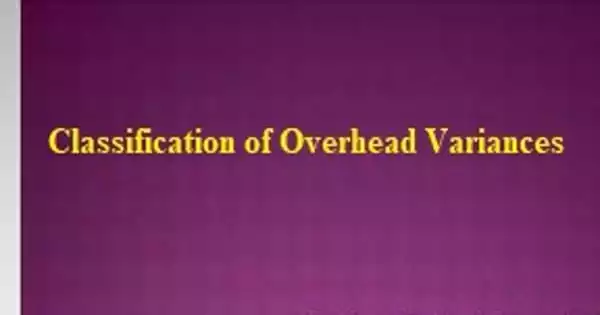Promotion system of Amtex BD
Amtex journey originally began three decades ago as a weaving unit, entered in international market in 1993 and experienced exponential growth to date by touching a milestone of total annual turn over of $ 200 Million. A team of Over 15000 professionals is ready to serve the clients in the best possible manner. Such mega growth is indicative of sheer dedication showed by the management of the mills the clients as well as to their employees.
Amtex Awards
Our slogan “Excellence without Compromise” has been proved by producing quality products over the years.That is only why Amtex is being awarded “Best Export Trophy Award” & Gold Medal for “Businessman of the Year”.
Meaning of Recruitment
Recruitment means to estimate the available vacancies and to make suitable arrangements for their selection and appointment. Recruitment is understood as the process of searching for and obtaining applicants for the jobs, from among whom the right people can be selected.
A formal definition states, “It is the process of finding and attracting capable applicants for the employment. The process begins when new recruits are sought and ends when their applicants are submitted. The result is a pool of applicants from which new employees are selected”. In this, the available vacancies are given wide publicity and suitable candidates are encouraged to submit applications so as to have a pool of eligible candidates for scientific selection.
In recruitment, information is collected from interested candidates. For this different source such as newspaper advertisement, employment exchanges, internal promotion, etc. are used.
In the recruitment, a pool of eligible and interested candidates is created for selection of most suitable candidates. Recruitment represents the first contact that a company makes with potential employees.
According to Edwin B. Flippo, “Recruitment is the process of searching the candidates for employment and stimulating them to apply for jobs in the organization”. Recruitment is the activity that links the employers and the job seekers. A few definitions of recruitment are:
- A process of finding and attracting capable applicants for employment. The process begins when new recruits are sought and ends when their applications are submitted. The result is a pool of applications from which new employees are selected.
- It is the process to discover sources of manpower to meet the requirement of staffing schedule and to employ effective measures for attracting that manpower in adequate numbers to facilitate effective selection of an efficient working force.
Recruitment is a continuous process whereby the firm attempts to develop a pool of qualified applicants for the future human resources needs even though specific vacancies do not exist. Usually, the recruitment process starts when a manger initiates an employee requisition for a specific vacancy or an anticipated vacancy.
Purpose of Recruitment
- Determine the present and future requirements of the organization on conjunction with its personnel-planning and job analysis activities.
- Increase the pool of job candidates at minimum cost.
- Help increase the success rate of the selection process by reducing the number of visibly under qualified or overqualified job applicants.
- Help reduce the probability that job applicants, once recruited and selected, will leave the organization only after a short period of time.
- Meet the organization’s legal and social obligations regarding the composition of its work force.
- Begin identifying and preparing potential job applicants who will be appropriate candidates.
- Increase organizational and individual effectiveness in the short term and long term.
- Evaluate the effectiveness of various recruiting techniques and sources for all types of job applicants.
Recruitment is a positive function in which publicity is given to the jobs available in the organization and interested candidates are encouraged to submit applications for the purpose of selection.
Recruitment represents the first contact that a company makes with potential employees. It is through recruitment that many individuals will come to know a company, and eventually decided whether they wish to work for it. A well-planned and well-managed recruiting effort will result in high quality applicants, whereas, a haphazard and piecemeal efforts will result in mediocre ones.
Recent Trends in Recruitment
The following trends are being seen in recruitment:
Outsourcing
The HR processes are being outsourced from more than a decade now. A company may draw required personnel from outsourcing firms. The outsourcing firms help the organization by the initial screening of the candidates according to the needs of the organization and creating a suitable pool of talent for the final selection by the organization. Outsourcing firms develop their human resource pool by employing people for them and make available personnel to various companies as per their needs. In turn, the outsourcing firms or the intermediaries charge the organizations for their services. Advantages of outsourcing are:
- Company need not plan for human resources much in advance.
- Value creation, operational flexibility and competitive advantage
- turning the management’s focus to strategic level processes of HRM
- Company is free from salary negotiations, weeding the unsuitable resumes/candidates.
- Company can save a lot of its resources and time
Poaching/Raiding
“Buying talent” is the latest mantra being followed by the organizations today. Poaching means employing a competent and experienced person already working with another reputed company in the same or different industry; the organization might be a competitor in the industry. A company can attract talent from another firm by offering attractive pay packages and other terms and conditions, better than the current employer of the candidate. But it is seen as an unethical practice and not openly talked about. Indian software and the retail sector are the sectors facing the most severe brunt of poaching today. It has become a challenge for human resource managers to face and tackle poaching, as it weakens the competitive strength of the firm.
E-Recruitment
Many big organizations use Internet as a source of recruitment. E- Recruitment is the use of technology to assist the recruitment process. They advertise job vacancies through worldwide web. The job seekers send their applications or curriculum vitae i.e. CV through e mail using the Internet. Alternatively job seekers place their CV’s in worldwide web, which can be drawn by prospective employees depending upon their requirements.
Advantages of recruitment are:
- Low cost.
- No intermediaries
- Reduction in time for recruitment.
- Recruitment of right type of people.
- Efficiency of recruitment process.
Recruitment Management System
Recruitment management system is the comprehensive tool to manage the entire recruitment processes of an organization. It is one of the technological tools facilitated by the information management systems to the HR of organizations. Just like performance management, payroll and other systems, Recruitment management system helps to contour the recruitment processes and effectively managing the ROI on recruitment.
The features, functions and major benefits of the recruitment management system are explained below:
- Structure and systematically organize the entire recruitment processes.
- Recruitment management system facilitates faster, unbiased, accurate and reliable processing of applications from various applications.
- Helps to reduce the time-per-hire and cost-per-hire.
- Recruitment management system helps to incorporate and integrate the various links like the application system on the official website of the company, the unsolicited applications, outsourcing recruitment, the final decision making to the main recruitment process.
- Recruitment management system maintains an automated active database of the applicants facilitating the talent management and increasing the efficiency of the recruitment processes.
- Recruitment management system provides and a flexible, automated and interactive interface between the online application system, the recruitment department of the company and the job seeker.
- Offers tolls and support to enhance productivity, solutions and optimizing the recruitment processes to ensure improved ROI.
- Recruitment management system helps to communicate and create healthy relationships with the candidates through the entire recruitment process.
The Recruitment Management System (RMS) is an innovative information system tool which helps to sane the time and costs of the recruiters and improving the recruitment processes.
(Promotion)
The advancement of an employee from one job position to another job position that has a higher salary range, a higher level job title, and, often, more and higher level job responsibilities, is called a promotion. Sometimes a promotion results in an employee taking on responsibility for managing or overseeing the work of other employees. Decision making authority tends to rise with a promotion as well.
Visually, a promotion moves an employee’s job up one level on an organizational chart. The new reporting relationships are displayed as vertical lines to boxes below the new level of the employee following the promotion.
A promotion is viewed as desirable by employees because of “the impact a promotion has on pay, authority, responsibility, and the ability to influence broader organizational decision making. A promotion raises the status of the employee who receives a promotion which is a visible sign of esteem from the employer.”
Individual contributors must be eligible for promotions that recognize and reward their role as contributors. A promotion is a powerful communication tool about what is valued within an organization. Thus, a promotion must be available to employees who play any role in the contribution of work and value.
Examples of a Promotion
These are examples of a promotion:
- HR Assistant receives a promotion to HR Generalist
- HR Generalist receives a promotion to a dual role of HR Generalist and Employee Development Coordinator
- HR Generalist is given a promotion to HR Manager
- HR Manager is given a promotion to Manager of Human Resources and Administration
- HR Manager is promoted to HR Director
So the advancement of an employee within a company positionor job tasks.
A job promotion may be the result of anemployee’s proactive pursuit of a higher ranking or as areward by employers for good performance. Typically is alsoassociated with a higher rate of pay or financial bonus.
Promotion of “Amtex “requires
Promotion refers to shifting of an employee to higher position carrying higher status, responsibility and pay. For example, suppose a post is blank. Then the organization tries to fill up this blank by promoting a person who is working in the organization and is skilled, qualified, senior and experienced. Though most often successful, promotions from within have some drawbacks as well. The person’s performance on one job may not be good predictor of performance of another, because different skills may be required on the new job. For example, not every good worker makes a good supervisor. In most supervisory jobs, an ability to accomplish the work through others requires skills in influencing and dealing with people that may not have been a factor in non supervisory jobs.
It is clear that people in organizations with fewer levels May have less frequent chances for promotion. Also, in most organizations, promotions may not be an effective way to speed the movement of protected classes’ individuals up through the organization if that is an organizational concern.
Promotion Elements of Amtex:
- skilled
- qualified
- senior
- experienced
- performance
Importance of Promotion
1) A promotion is an increase in rank which may also be accompanied by a raise in pay, benefits, and responsibility. Most people view promotions positively, as they indicate that the individual being promoted is successful, valuable, and useful. In many workplaces, people actively work towards promotion and its accompanied benefits. The term is also sometimes used to refer to a general change in status such as a graduation, which is why you may find yourself attending a “fifth grade promotion” instead of a fifth grade graduation.
2) Typically, someone is rewarded with a promotion when he or she performs exemplary work, or shows aptitude for a position with more responsibility. This is usually a cause for celebration, as it indicates that the employee has a potential for development and long employment within the company. A promotion may include supervision responsibilities, as the promoted employee becomes responsible for administrative assistants and other staff. These responsibilities should not be taken lightly, as most employees look to their supervisors for guidA promotion may also require more work, which goes along with general increases in responsibility. This work may be more complex or more interesting, however, so most employees are happy to take it on. In recognition of the increased workload and status of the employee, most employers offer a pay raise with a promotion, and employees may become eligible for additional benefits. In a ranked system like the military or a fire department, the promotion may be called an increase in rank or grade, and the employee’s pay will be adjusted according to a rigid scale.ance and examples of appropriate workplace behavior.
3) Notification of a promotion and congratulations are usually offered by a supervisor or high ranking member of the company. If you have been selected for a promotion, be aware that this is an excellent time to make negotiations, such as a request for a change in hours, because your employer is indicating that you are valued as an employee. When you are promoted, you may have to sign paperwork indicating the type of promotion and noting any changes in pay.
4) Not all people view promotions as cause for celebrations. Some people, for example, prefer to remain lower in rank so that they can stay in the field in professions like policing. Others enjoy jobs with light responsibilities, despite the lower pay. In some cases, it is possible to reject such a promotion, although an employer may be puzzled. In others, a promotion is not an option
Transfer
Transfer is the process of shifting of an employee from one job to another without any major chance in the status and responsibilities of the employee. For transfer, the salary range will not change. It remains same. For example, if the deputy commissioner of Dhaka transferred to chittagong, his status, responsibility and salary will remain same.
Parading
It is an internal source; it refers to the chance of wage, facilities, responsibilities without change of post and position. It is basically based on performance. A well performed personnel’s salary and other facilities will increase but personnel’s designation will remain same. For example, in a multi-national company, there are specifying himself by showing his performance. Then he can be upgraded from the lower grade to upper grade but personnel’s designation will remain same.
Demotion
It refers to the lowering down of the status, salary, responsibility and designation of the employee far not performing his duty properly on engaged with corruption. For example, when a director downs to deputy director, it is called demotion.
Job posting and bidding is a system in which the employer provides notices of job openings and employees respond by applying for specific openings. The organization can notify employees of all job vacancies by posting notices. Circulating publications or in some other way inviting employees to apply for jobs.
On bulletin boards in locations such as employee lounges, cafeterias and even near elevations. A job posting system gives each employee an opportunity to move to a better job with in the organization.
Why it is important to make the right recruitment and selection decisions for AMTEX BD” ?
Apart from the obvious importance of attracting talented people into the organization, why is the recruitment and selection decision so important—because
1. Each employment decision can add to, or subtract from, the overall quality of the workforce
2. The ability to managers continuously to generate greater levels of added value from each employees is heavily influenced by what each new recruit brings into the organization and what each is capable of becoming
3. As a result of the increase in employment protection rights, it has become more difficult to correct mistakes in employment decisions once a person has been offered, and has accepted, a contract
4. Employees who fail to meet the performance and behavior expectations of managers can have a detrimental impact on the performance of the others
5. The process of correcting hiring mistake can be difficult, prolonged and costly to all those involved
6. Employing new and better qualified staff to replace those that are unwilling or unable to adapt to new requirements is often the only effective long term strategy for improving the operational performance of the functions and departments
“Amtex” Consider putting right men on right job
Employee Selection is the process of putting right men on right job. It is a procedure of matching organizational requirements with the skills and qualifications of people. Effective selection can be done only when there is effective matching. By selecting best candidate for the required job, the organization will get quality performance of employees. Moreover, organization will face less of absenteeism and employee turnover problems. By selecting right candidate for the required job, organization will also save time and money. Proper screening of candidates takes place during selection procedure. All the potential candidates who apply for the given job are tested. But selection must be differentiated from recruitment, though these are two phases of employment process. Recruitment is considered to be a positive process as it motivates more of candidates to apply for the job. It creates a pool of applicants. It is just sourcing of data. While selection is a negative process as the inappropriate candidates are rejected here. Recruitment precedes selection in staffing process. Selection involves choosing the best candidate with best abilities, skills and knowledge for the required job.
Reference check
Generally reference imply letter of commendation, which are mainly two types:
- Character references as provided by friends and acquaintance of the applicant.
- From previous employers or teachers, .the process is mainly regular checks which concerned with verification or confirmation of factual information as provided in the application.
Methodology of reference check
There are many methods to check the reference but mostly used are:
- The Mail .This method is used in soliciting opinion of people who cannot be easily accessible on telephone. Though it is economical but suffers from drawbacks like not answering and delayed answer etc.
- The Telephone. This is more useful and advantageous method. It is more popular, quicker, and cheaper than the written quarries through mail. The reliability of such personal contacts is also greater.
- Personal Visit. The personal visit is of still more beneficial than a telephone call. It allows longer conversation and reliability is more. Though it is time consuming and expensive.
One thing is more important while reference checking is that the kind of relationship of the candidates with those whom they refer. It should be carefully determined, considered and weighted while evaluating the opinion expressed. It is often the case that reference with high commendation carries a stigma behind it that the employer wants to get rid of the applicant. It is nothing unusual in the modern business practice.
Test
Selection and employment tests are usually administered after the application has been examined and candidate appears to be acceptable, test involves both professional and psychological. The importance of tests is recognized and found more suitable tool for selecting their employees, primarily tests supplement the information already collected though application.
Objective of Test:
The main objectives of the test include:
- Measuring job applicant’s latent abilities, experience, education and suitability to perform assigned job.
- Means of eliminating misfits and failure and thus selecting the right man for right job.
- Tests help improving the personnel selection procedure.
- The test seeks to eliminate the possibility of prejudice or bias on the part of an interviewer for taking selection decisions.
Test contributes greatly to training programs by identifying the weaknesses and deficiencies of individuals.
Types of Test
In broad classification of test, it may be placed in two categories firstly, those tests involving group approach and applicable to many individual at one time. Secondly, those tests with individual approach, which require separate examination for each person being tested. Few of the typical tests in each category are:
- Intelligence test.
- Aptitude test.
- Dexterity test.
- Personality test.
- Interest test.
- Achievement of proficiency test.
In Lafarge IT test is carried out to judge the IT knowledge of the candidates.
Interview
The applicant passed though the screening test and his/her references also having been checked up, he/she is now ready for final interview. It is the last phase of selection process. According to the Scott “An interview is purposeful exchange of ideas, the answering of questions and communication between two or more persons”.
In the process the interviewer also well equipped with a significant amount of factual data about the applicant, the personal history, test scores and references etc.
Interview is considered to be the most important universal method of evaluation and is widely used for effective selection and placement. It is recognized as the “heart” of the employment process. However at the same time the interview is perhaps a highly intricate, complicated and difficult part of the selection procedure.
Objective of Interview, Some of the important objectives are:
- An interview enables the interviewer to view the “total individual” about the applicant.
- An intelligent and experienced interviewer can get the clues to discover application aspiration, behavior and other interpersonal attitude.
- A means of motivating the applicant of the advantage of employment in the organization and vice versa.
- In creates the mutual understanding and confidence between HR department and prospective employees of the company.
- The interview promotes the good will towards the company, as matter of fact whether the application is selected for employment or not.
Types of Interview:
There are four types of interview commonly in use in the process of selection. These are:
- Preliminary Interview. In the preliminary interview the applicant is apprised of the nature of the job terms and condition and the policies of the company. It the candidate after the preliminary interview appears to be likely acceptable, he/she is placed in the short list.
- Structured Interview. The structural interview primarily relates to direct or indirect questioning, questions more or less have been already framed. The question mainly covers work experience, education and career planning.
- The Stress Interview. This type of interview is used to discover and assess some of the very important personality characteristics of the applicant. In brief it helps to find out his/her reaction towards any stress or uncomfortable situation likely to face. It should be remember that, the situation to be created tactfully and carefully to bring out the exact feelings of the candidate.
- Group Interview. This type of interview is used when the numbers of applicants for a given job is large and there is less time available. This type of
- Interview saves time and proves to be economical. However, it should be conducted by an interviewer having well judgment and long experience.
Qualification of a Successful Interviewer for AMTEX:
In an interview most important part is played by an interviewer. Because it is the interviewers ability how he/she brings out maximum from the applicants (interviewee). Research/ studies show that interviewers possessing desirable personality, adequate abilities and training, using sound method and procedure can achieve good results. Qualification mostly desired of one interviewer includes;
- Personality: An interviewer must have a good health, a nice appearance and a reasonable attractive personality. He/she should have pleasing manners elegant dress and eloquent speech. This will enable an interviewer to establish a good rapport and commutation easily with applicants.
- Positive Commendation of Relative Vans and Importance of Human Being: A consideration that entails her/him to respect the candidate irrespective of his/her back ground.
- Knowledge of the Company and the Job: An interviewer must be familiar with the details of the company and particularly about the job for which the candidate is being selected.
- Well Conversant with the Interviewing Theory and Practice: Professionally the interviewers should be well conversant about the theory and practice of the interview. He/she should be a well read man and should have adequate knowledge about the subject.
- Intelligence: High level intelligence is desirable from an interviewer to select the best possible candidates.
- Sound Judgment: An interviewer must exercise sound judgment while judging a candidate. He/she should be free from any prejudices or bias in the best interest of the organization.
- Flexibility: Rigidity is an undesirable qualification for an interviewer. He/she should act with a flexible attitude and high level tolerance to approach.
Suitability a potentials candidate
A candidate should be well fitted to the job. He/she should possess all the qualities of a good human being having intelligence and capability to perform the job efficiently and effectively.
The candidate should possess a good personality, having good interpersonal commutation capability and should be convinced with the terms and condition of the company. He/she should have dutifulness and respect to the norms and practices of the organization.
Settlement of terms and condition
Once the candidate is adjudged to be suitable for the organization then management negotiates or settles the terms and conditions. If the candidate is agreed upon, he/she proceeds towards final selection process.
OBJECTIVES selection of AMTEX:
The function of the business selection process is choosing, from amongst candidate companies, those with the greatest potential for success. This is a complex process, because the concept of success is a relative value. Each incubator has its own criteria, that result from the decisions taken during the modelling and planning of the incubator. For more information, see guideline Modelling and Planning an ICT-Enabled Business Incubator. Definitions of partners, mission, vision, objective, focus, model and purpose of the incubator are highlighted
The business selection process must be compatible with the incubator’s internal and external environment. During this process companies are chosen that contribute to improving the indicators used for evaluating an incubator’s performance. See area Evaluating and Reporting on the Incubator.
Encouraging the recruitment of women:
Women represent a substantial pool of potential talent which Lafarge recognizes, therefore Lafarge sets three targets:
- Doubling the member of women in senior management position (Hay 18 and above) in the next five years.
- Identifying twenty women with high potential each year
- Adding a specific section in the succession planning process to encourage the development of the most praising women in the organization.
There are already a few concrete examples, a woman was recently appointed general manager in china, three have been appointed as plant manager in France. The state of the woman in senior positions likes,
- 14% of managers (Hay 13 and above).
- 5% of senior manager (Hay 18 and above).
- 4% woman in posts of Hay 23 and above.
This proves that Lafarge is very keen to recruit the woman and develop their career. In Lafarge Surma Cement Ltd also a good numbers of women are holding important positions.
Internationalization of Recruitment:
Constructing a global spirit in a multi local organization is a permanent approach for Lafarge. This implies exposing employees move to deferment environments and different culture. It is also a wonderful opportunity in terms of career development and discovering a new horizon. This is a source of personal fulfillment and win win situation. Lafarge has identified three targets in this regard:
- Ensuring that every Business unit management team having at least one member who comes from a different country.
- Accelerating the internalization in the corporate centre to reach a level of 33% non French managers within 3 to 5 years.
- Developing a program that will allow junior managers to take on international assignments early in their careers.
This is how Lafarge ensures its internalization of recruitment to have diversity in the organization.
Conclusion
The human element of organization is the most crucial asset of an organization. Taking a closer perspective -it is the very quality of this asset that sets an organization apart from the others, the very element that brings the organization’s vision into fruition.
Thus, one can grasp the strategic implications that the manpower of an organization has in shaping the fortunes of an organization. This is where the complementary roles of Recruitment and Selection come in. The role of these aspects in the contemporary organization is a subject on which the experts have pondered, deliberated and studied, considering the vital role that they obviously play.
The essence of recruitment can be summed up as ‘the philosophy of attracting as many applicants as possible for given jobs’. The face value of this definition is what guided recruitment activities in the past. These days, however, the emphasis is on aligning the organization’s objectives with that of the individual’s. By making this a priority, an organization safeguards its interests and standing. After all, a satisfied workforce is a stable workforce which also ensures that an organization has credible and reliable performance. Ina bid to underscore this subtle point, the project examines the various processes and nuances one of the most critical activities of an organization.
The end result of the recruitment process is essentially a pool of applicants. Next to recruitment, the logical step in the HR process is the selection of qualified and competent people. As such, this process concentrates on differentiating between applicants in order to identify and hire those individuals whose abilities are consistent with the organization’s requirements.
The reader will do well to note that the transition between the two activities is not stringent. The two activities basically have one aim- to yield a perfect employee for the organization.
Nor are these activities typecast. Every organization tailors the processes keeping in mind the nature of the organization, its needs and constraints.
In this project, we examine this angle through the case studies of two companies, involved in the same sector but essentially different in their perceptions towards recruitment and selection. And both seem to have benefited from their take on the two processes.
In the end, this report endeavors to present a comprehensive picture of Recruitment and Selection and hopes to enable the reader to appreciate the various intricacies involved.
















